You want to probe the thickest part of the brisket’s flat muscle – roughly near the middle.
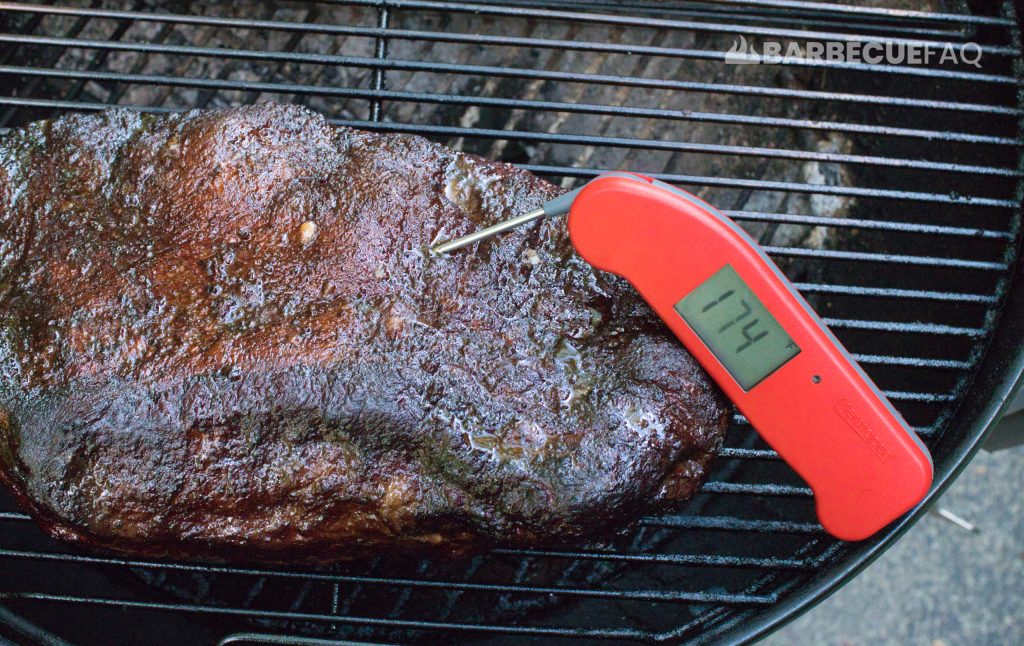
The reason for probing here is because the point muscle (fatty) will always finish faster than the flat muscle (lean).
This gives you a better idea of when the entire brisket is near tenderness and when you should be wrapping.
Why You Shouldn’t Probe the Thinnest Part of the Flat OR Just the Point
On any brisket, the front of the flat will take the longest to finish or to reach tenderness.
It’s a tight grained muscle and contains far less fat than the point.
This picture was taken at the exact same time as the photo above.
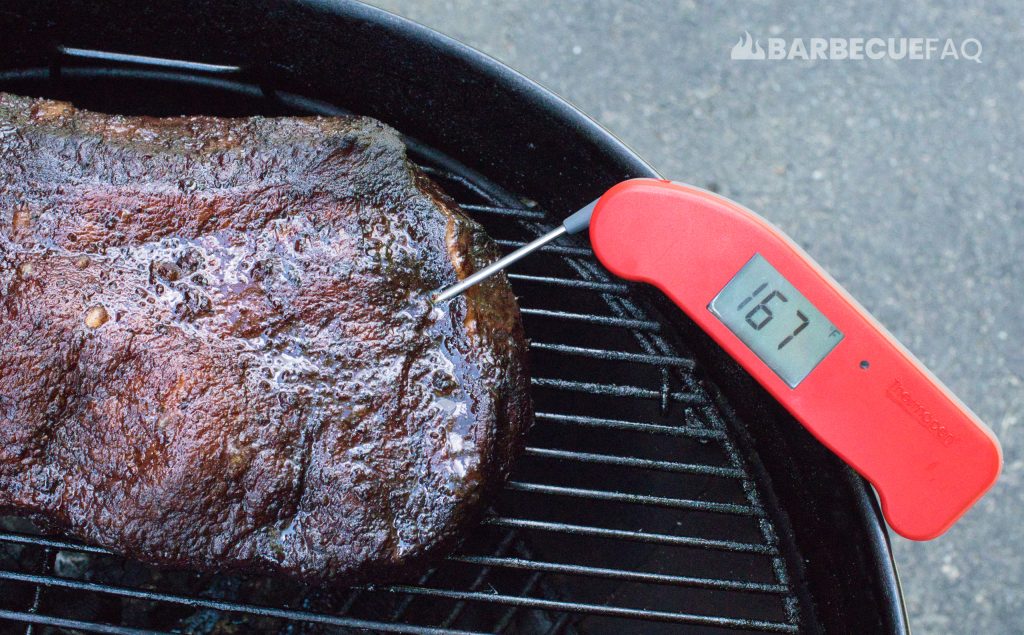
Here’s the point reading at the same time too:

Meaning, on the same brisket probed in 3 different places, at the same time, we have 3 different internal temperatures.
- Brisket Flat: 167F
- Thickest Part of the Flat: 174F
- Brisket Point: 184F
The biggest reason we’re looking at the thickest part of the flat is because it’s the middle ground between the point (which finishes fast) and the brisket flat (which finishes slow).
This is Just Another Reason Internal Temperature Sucks for Wrapping
Most websites/articles/recipes will tell you to to “wait for the brisket to stall” – which usually occurs around 150 – 160F.
From the above, we now know:
If you were to probe the point and it read 160F, the flat could be as low as 143F.
At 160-165F, the brisket is still pushing out tons of moisture and surface evaporation (the stall) is still occurring and may last 2-6 hours.
If water is still being sweated out and you wrap during it, you miss out on creating a better bark.
My suggestion is to wait until at least 170F in the thickest part of the flat; More in the range of 175-180F.
Probing for Tenderness Near the End of the Cook
Towards the end of the cook, you should be using your probe or toothpick to glide through all parts of the brisket.
The most common adage is that the probe should feel like it’s sliding through softened butter.
I know that’s really hard to understand so I recorded a quick video of me probing for tenderness in the brisket above.
I also know it’s hard to convey what I mean by “through soft butter” so I quite literally dropped – and I mean entirely let go of my probe to slide through the brisket.
As you can see, it even punctured a hole in my foil boat and I had to add another layer of aluminum foil.
It proves my point though – you want the probe to slide through like that, with no resistance.
If some spots are tight:
You can usually resolve these with an extended rest/hold overnight.
The brisket in this article felt a bit tight near the flat (you can actually see me prod it a few times) so I opted to leave it in my electric smoker at 175F for an overnight rest – this way carry over cooking continues to happen.
However, if all spots of the brisket felt probe tender, I’d rest for at least 2 hours and then hold overnight at 175F.
This brisket the next day:
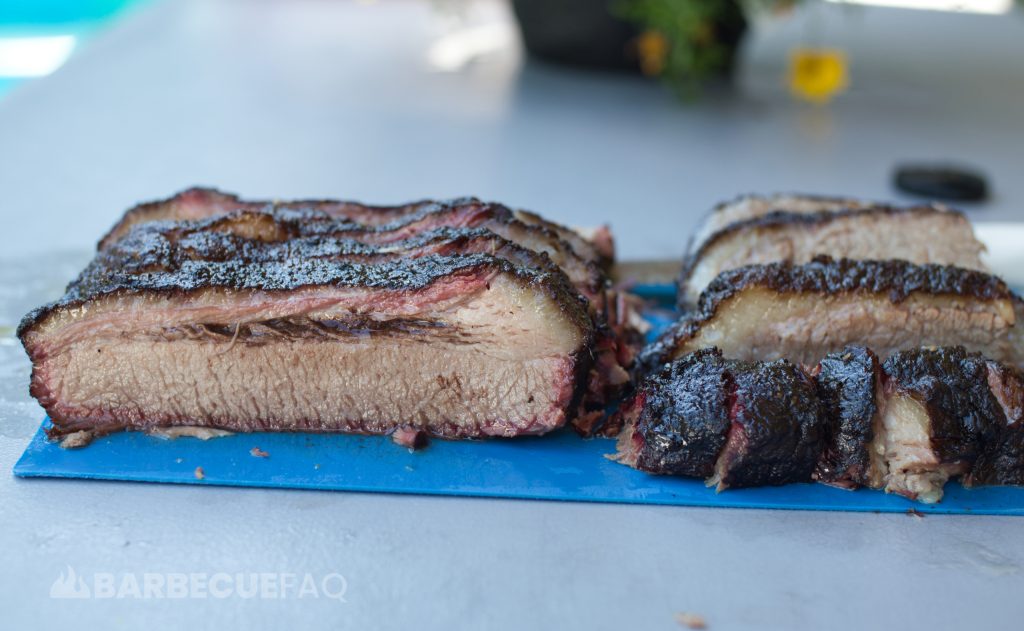



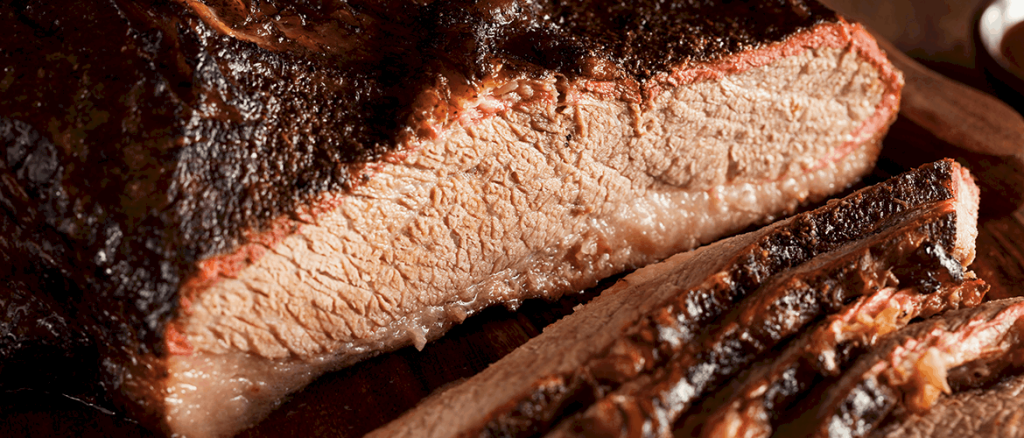

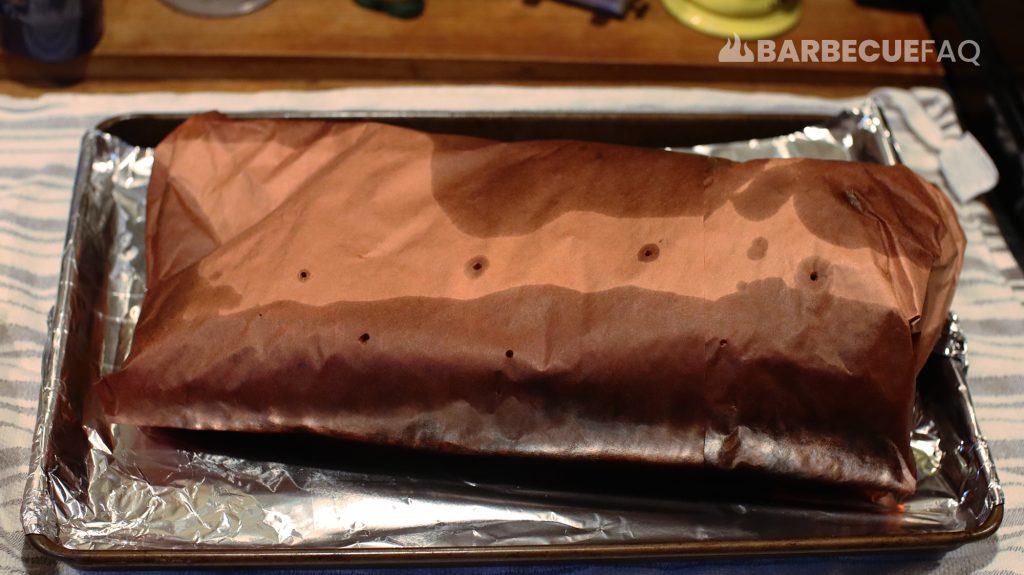
2 comments
Chris
Thank you for the advice
Dylan Clay
Happy to help Chris!